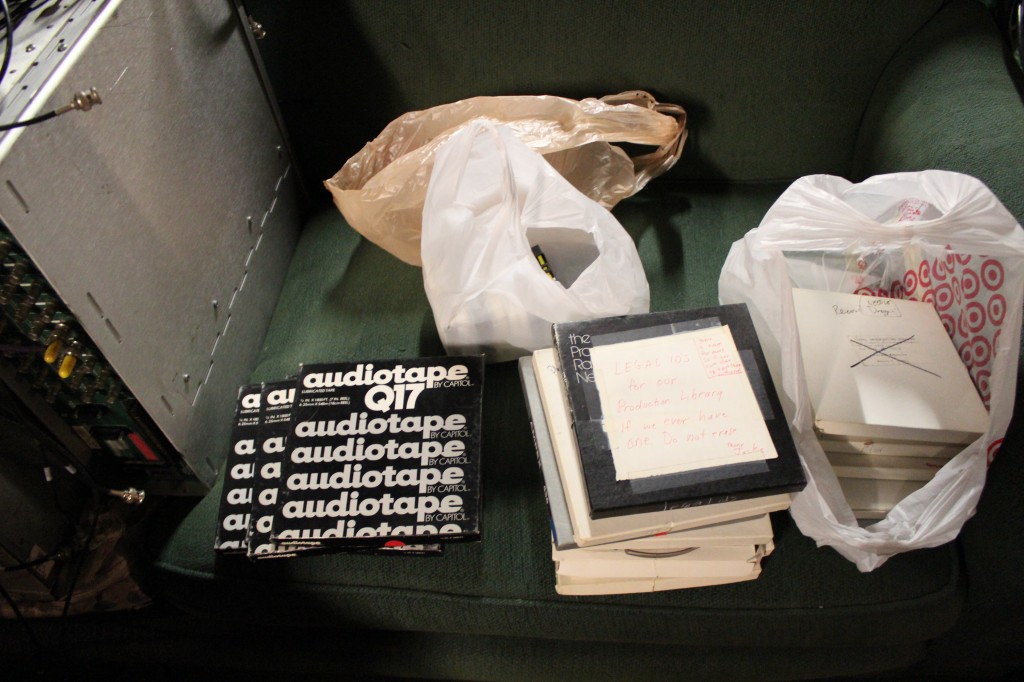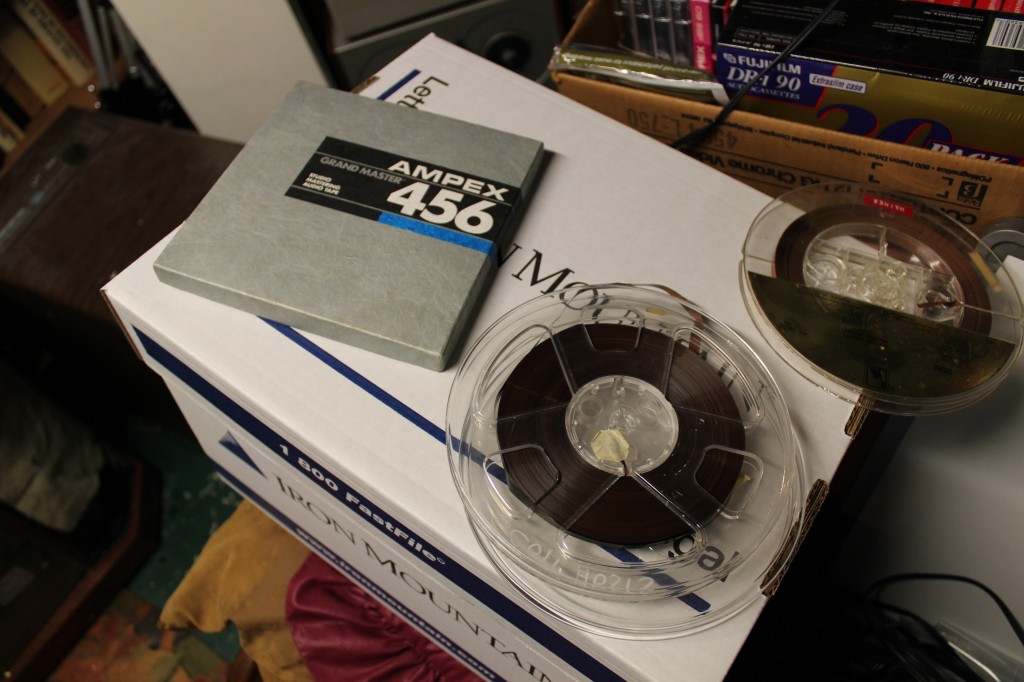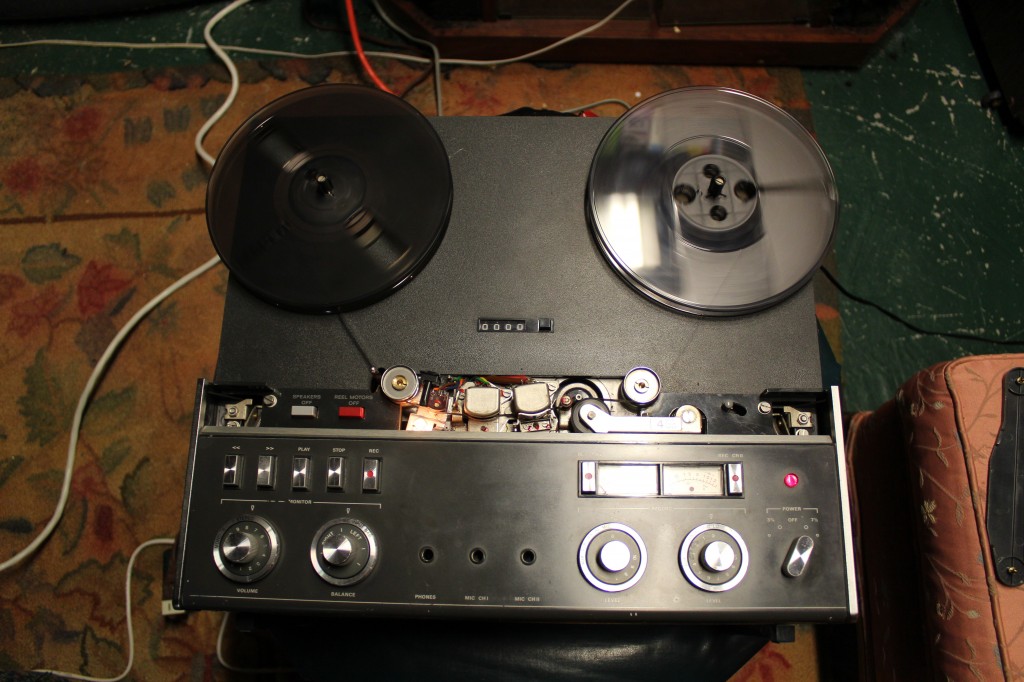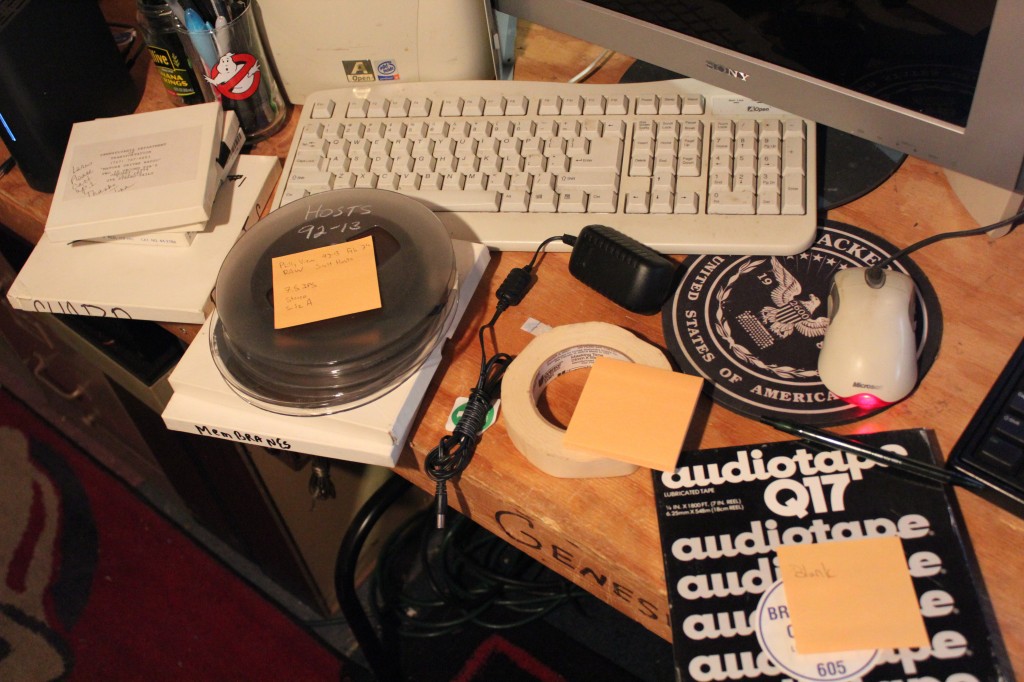Archiving Radio
A few months ago, I got involved with my university’s radio station. It happened unexpectedly. I was out with some friends in the city and two of us made our way back to the school campus. My friend, a member of the station, had to run inside to check something out and ended up calling me in because there was some older gear that he wanted me to take a look at. I was walked past walls of posters and sticker-covered doors to the engineering closet. The small space was half the size of an average bedroom, but was packed to the brim with decades of electronics. Needless to say, I was instantly excited to be there and started digging through components and old part boxes. A few weeks later, after emailing back and forth with a few people, I became something of an adjunct member with a focus in engineering. This meant anything from fixing the doorbell to troubleshooting server issues, the modified light fixtures, the broken Ms. Pac-Man arcade machine, or a loose tone-arm on a turntable. There are tons of opportunities for something to do, all of which I have found enjoyment in so far.
Let’s take a step back. This radio station isn’t a new fixture by any means. I feel that when people think of college radio these days they imagine a mostly empty room with a sound board and a computer. Young DJ’s, come in, hook up their iPod, and go to work.
This station is a different animal. Being over 50 years old means a lot has come and gone in the way of popular culture as well as technology. When I first came in and saw the record library contained (at a rough estimate) over 40,000 vinyl records, I knew I was in the right place. I began to explore. I helped clean out the engineering room, looked through the production studio, and learned the basics of how the station operated. After a few weeks, I learned that the station aimed to put out a compilation on cassette tape for the holiday season. One of the first tasks would be to get some 50 station identifications off of a minidisc to use between songs. Up to the task, I brought in my portable player and with the help of a male/male 3.5mm stereo cable and another member’s laptop, got all the identifications recorded. While the station borrowed a cassette duplicator for the compilation, it would still take a long time to produce all the copies, so I brought in a few decks of my own and tested some of the older decks situated around the station. It was my first time doing any sort of mass duplication, but I quickly fell into a grove of copying, sound checking, head and roller cleaning, and packaging. If felt good contributing to the project knowing I had something of a skill with, and large supply of old hardware.
A little later, I took notice of several dust-coated reels in the station’s master control room containing old syndicated current-event shows from the ’80s and ’90s. I took these home to see if I could transfer them over to digital. I ran into some problems early one with getting my hardware to simply work. I have, at the time of writing, six reel-to-reel decks, all of which have some little quirk or issue except one off-brand model from Germany. I plugged it in, wired it to my computer via RCA to 3.5mm stereo cable, and hit record in Audacity. The end result was a recording in nice quality.

Stacks of incoming reels.
I decided to go a little further and use this to start something of an archive for the radio station. I saved the files using PCM signed 16 bit WAV, and also encoded a 192kbps MP3 file for ease of use and then scanned the reel (or box it was in) for information on the recording, paying attention to any additional paper inserts. I scanned these in 600dpi TIFF files which I then compressed down to JPG (again, for ease of use). Any interesting info from the label or technical abnormalities were placed in the file names, along with as much relevant information I could find. I also made sure to stick this information in the correct places for the ID3 tags. Lastly, I threw these all into a directory on a server I rent so anyone with the address can access them. I also started asking for donations of recordings, of which I received a few, and put them up as well.

What’s up next?
After I transferred all the reels I could find (about 10), I went on the hunt for more. Now, until this point, I had broadcast quality 7-inch reels that ran at 7.5ips (inches per second) with a 1/4-inch tape width. A lot of higher quality recordings are done on 10.5-inch reels that run at 15ips, though sometimes 7-inch reels are used for 15ips recordings. Reel-to-reel tape can also be recorded at other speeds (such as 30ips or 3.75ips), but I haven’t come across any of these besides recordings I have made. Now, while my decks can fit 7-inch reels okay, they can’t handle any 10.5-inch reels without special adapters (called NAB hubs) to mount them on the spindles which I currently don’t have. Additionally, there are other tape widths such as 1/2-inch which I don’t have any equipment to play. The last problem I encounter is that I don’t have any machines that can run at 15ips.

In progress.
Doing more exploratory work, I got my hands on several more 7-inch reels and also saw some 10.5-inch reels housing tape of various widths. Some of the 7-inch reels I found run at 15ips, and while I don’t have a machine that does this natively, I’ve found great success in recording at 7.5ips and speeding up the track by 100% so the resulting audio plays twice as fast. As for the larger reels, I may be able to find some newly-produced NAB hubs for cheap, but they come with usage complaints. While original hubs would be better to use, they come with a steep price tag. There is more here to consider than might be thought at first. Additionally, there is a reel-to-reel unit at the station that though unused for years is reported to work and be able to handle larger reels and higher speeds. However, it is also missing a hub and the one it has doesn’t seem to come close to fitting a 10.5-inch reel properly. At the moment, there doesn’t look to be anything I can use to play 1/2-inch width tape, but I’m always on the hunt for more hardware.
There are literally hundreds of reels at the station that haven’t been touched in years and need to be gone through, it’s a long process but it yields rewarding results. I’ve found strange ephemera: people messing with the recorder, old advertisements, and forgotten talk shows. I’ve also found rare recordings featuring interviews with bands as well as them performing. This is stuff that likely hasn’t seen any life beyond these reels tucked away in storage. So back to transferring I go, never knowing what I will find along the way

Digitizing.
From this transferring process I learned a lot. Old tape can be gummy and gunk up the deck’s heads (along with other components in the path). While it is recommended to “bake” (like you would a cake in an oven) tape that may be gummy, it can be difficult to determine when it is needed until you see the tape jamming in the machine. Baking a tape also requires that it is on a metal reel while most I have encountered are on plastic. Additionally, not all tape has been stored properly. While I’ve been lucky not to find anything too brittle, I’ve seen some tape separating in chunks from its backing or chewed up to the point that it doesn’t even look like tape anymore. More interesting can be some of the haphazard splices which may riddle a tape in more than one inopportune spot or be made with non-standard types of tape. I’ve also noticed imperfections in recording, whether that means the levels are far too low, there’s signs of a grounding loop, or the tape speed is changed midway through the recording. For some reels there is also a complete lack of documentation. I have no idea what I’m listening to.
I try to remedy these problems best I can. I clean my deck regularly: heads, rollers, and feed guides. I also do my best to document what I’ve recorded. I listen to see if I can determine what the audio is, determine the proper tape speed, figure out if the recording is half track (single direction, “Side A” only) or quarter track (both directions, “Side A + B”), and determine if the recording is in mono or stereo. Each tape that goes through me is labelled with said information and any information about defects in the recording that I couldn’t help mitigate.
After dealing with a bad splice that came undone, I’ve also gone ahead and purchased a tape splicer/trimmer to hopefully help out if this is to happen again. As for additional hardware, I’m always on the lookout for better equipment with more features or capabilities. I don’t know what I’ll ultimately get my hands on, but I know that anything I happen to obtain will lend a hand in this archiving adventure and help preserve some long-forgotten recordings.
After doing this enough times, I’ve started to nail down a workflow. I put all the tapes in a pile for intake, and choose one to transfer. I then feed it into the machine, hit record in Audacity, and hit play on the deck. After recording, I trim any lead-in silence, speed correct, and save my audio files. At this point, I also play the tape in the other direction to wind it back to its original reel and see if there are any other tracks on it. From here, I label my files, and go on to make scans of the reels or boxes before then loading these images into Photoshop for cropping and JPG exporting.

All done.
It is a lot of work, but I can easily crank out a few reels a day by setting one and going about with my normal activities, coming back periodically to check progress. I have many more reels to sift through, but I hope one day to get everything transferred over–or at least as much as I can. Along the way, I’ve come across other physical media to archive. There are zines, cassette tapes, and even 4-track carts that are also sitting away in a corner, being saved for a rainy day.
I’ll keep archiving and uncovering these long forgotten recordings. All I can hope for is that some time, somewhere, someone finds these recordings just as interesting as I do.
Even if nobody does, I sure have learned a lot. With any luck, I’ll refine my skills and build something truly awesome in the process.